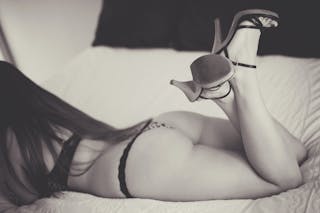As a writer and avid fan of television, I have always been drawn to the diverse array of characters that grace our screens. From the charming and witty to the complex and mysterious, there is no shortage of personalities to captivate our attention. However, when it comes to representation of asexuality on television, there is a noticeable lack of visibility. This realization struck me when I set out to create an asexual character for a TV show, and it became clear that we still have a long way to go in terms of true inclusion and representation.
Are you tired of seeing the same old stereotypes on TV when it comes to relationships and sexuality? It's time for a change. We need more diverse and accurate representation on our screens. While there has been some progress, there is still work to be done. Check out this resource to learn more about asexual representation and how you can support the cause. Let's make sure everyone's story gets told.
The Importance of Asexual Representation
Explore the world of sci-fi porn games and add some excitement to your life!
Asexuality is a sexual orientation that is often misunderstood and overlooked in mainstream media. Asexuality is defined as a lack of sexual attraction to others, and it is a valid and important aspect of human diversity. Despite this, asexual individuals are often subjected to erasure and discrimination, and their experiences are rarely portrayed accurately or positively on television.
If you're looking for a new dating experience, why not give dating in Romania a try by visiting Dating Tales and seeing what the country has to offer.
Creating an asexual character for a TV show was an eye-opening experience for me. As I delved into research and spoke with asexual individuals about their experiences, I realized just how important it is to have accurate and respectful representation of asexuality in the media. Asexual individuals deserve to see themselves reflected in the stories that are told, and it is essential that their experiences are portrayed with sensitivity and nuance.
Check out this free dating site in Israel for a chance to meet new people!
Challenges in Creating an Asexual Character
One of the biggest challenges I faced in creating an asexual character for a TV show was navigating the stereotypes and misconceptions that surround asexuality. Asexual individuals are often portrayed as emotionless or cold, and their experiences are frequently trivialized or mocked. It was important to me to create a character who was fully fleshed out and multidimensional, and who defied the limited and harmful stereotypes that are often perpetuated in the media.
Another challenge was finding the right balance between highlighting the character's asexuality and allowing them to exist beyond this aspect of their identity. Asexuality is an important part of who a person is, but it does not define them entirely. It was crucial to me to create a character who was not reduced to a stereotype or a token, but who was fully realized and complex in their own right.
The Need for Better Representation
The experience of creating an asexual character for a TV show made me acutely aware of the need for better representation of asexuality in the media. Asexual individuals deserve to see themselves reflected in the stories that are told, and it is essential that their experiences are portrayed with sensitivity and nuance. Asexual representation is not only important for asexual individuals themselves, but also for the broader public, who can benefit from learning about and understanding different sexual orientations.
As a writer, I am committed to continuing to create characters who represent a diverse range of experiences and identities, including asexuality. I believe that it is crucial for television and media in general to reflect the full spectrum of human diversity, and to provide accurate and respectful representation for all individuals, regardless of their sexual orientation.
Moving Forward
Creating an asexual character for a TV show showed me that we still have a long way to go in terms of true inclusion and representation. While there has been some progress in recent years, there is still a noticeable lack of visibility for asexuality in the media. As we move forward, it is essential for writers, producers, and creators to continue to push for better representation of asexuality, and to advocate for the accurate and respectful portrayal of asexual individuals.
I hope that my experience in creating an asexual character for a TV show will inspire others to consider the importance of representation and inclusion, and to work towards creating a media landscape that reflects the true diversity of human experiences. Asexual individuals deserve to see themselves represented on screen, and it is up to all of us to ensure that their voices are heard and their stories are told.
- https://flirting-online.ua-sex.com/posts/how-to-come-at-home-for-christmas-expert-sex-tips-for-the-holidays/
- https://location-dating.thehottieandthenottie.com/posts/why-im-cheating-on-my-wife-of-five-years-with-multiple-women/
- https://dating-blog.getweps.com/posts/share-this-among-your-male-buddies-use-the-lword-boys/
- https://flirting-online.themountaintopplay.com/posts/how-to-prepare-for-anal-sex/
- https://datingguide.themountaintopplay.com/posts/this-is-officially-the-most-dangerous-sex-position/
- https://hookup-website.thehottieandthenottie.com/posts/bondage-stories-real-bondage-sex-stories/
- https://online-dating.campsupernow.com/posts/sex-fanfiction-10-best-sexy-fan-fiction/
- https://matchmaker-website.thehottieandthenottie.com/posts/threesome-positions-6-best-threesome-sex-positions/
- https://dating-blog.getweps.com/posts/black-friday-sex-toy-deals-and-offers-2023/
- https://fuck-apps.timebombrecordings.com/posts/what-is-kama-sutra/
- https://flirting.campsupernow.com/posts/how-to-sext-sexting-tips-for-sexting-your-partner/
- https://online-sex.getweps.com/posts/what-does-demisexual-and-demiromantic-mean/
- https://online-sex.thehottieandthenottie.com/posts/my-best-sex-ever-was-with-my-exs-best-friend/
- https://online-sex.getweps.com/posts/how-to-lick-a-girl-out-how-to-eat-a-girl-out-oral-sex-tips/
